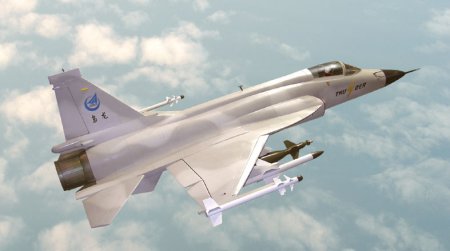Design problems lead to remodelling, with fourth prototype to incorporate changes
China’s Chengdu Aircraft (CAC) has postponed delivery of the first FC-1/Super-7 Thunder Dragon light fighter until 2007 to accommodate design changes. CAC says it will roll out a modified FC-1 prototype by year-end featuring revised air intakes, an extended strake and a larger vertical fin. The changes will be incorporated into the fourth prototype aircraft, a model of which was at last week’s Aviation Expo 2005 show in Beijing.

Problems with the original FC-1 design began to surface after its first flight in 2003, prompting the Chengdu Aircraft Design Institute to start working on a revised version last year. The changes have forced CAC to delay production of the first batch of aircraft for launch customer Pakistan and to postpone delivery of the type from late 2005 until 2007.
CAC is believed to have decided to pursue a revised design for the FC-1’s air intakes after smoke was discovered coming from the aircraft’s Klimov RD-93 engine during test flights.
It is believed test- pilot reports of control problems prompted CAC to also expand the wing leading-edge strakes, while the manufacturer says the vertical fin was elongated to accommodate an expanded equipment bay.
The redesigned FC-1 will have a maximum take-off weight slightly above the 12,400kg (27,300lb) of the original aircraft, but its top speed will be unchanged at Mach 1.6. The first prototype of the new design is scheduled to begin test flights early next year, with another two prototypes to be completed in 2006.
CAC continues to fly two prototypes of the original design, and to use a third for static testing. The company says the new batch of prototypes will initially fly with Chinese avionics, but will later be modified with Western systems. Pakistan is now evaluating British, French and Italian avionics packages and is expected to make a selection next year.
Islamabad has already ordered 16 FC-1s, assembly of which will be split between CAC and the Pakistan Aeronautical Complex, and may acquire up to 134 more locally assembled aircraft.
BRENDAN SOBIE/BEIJING
Source: Flight International























